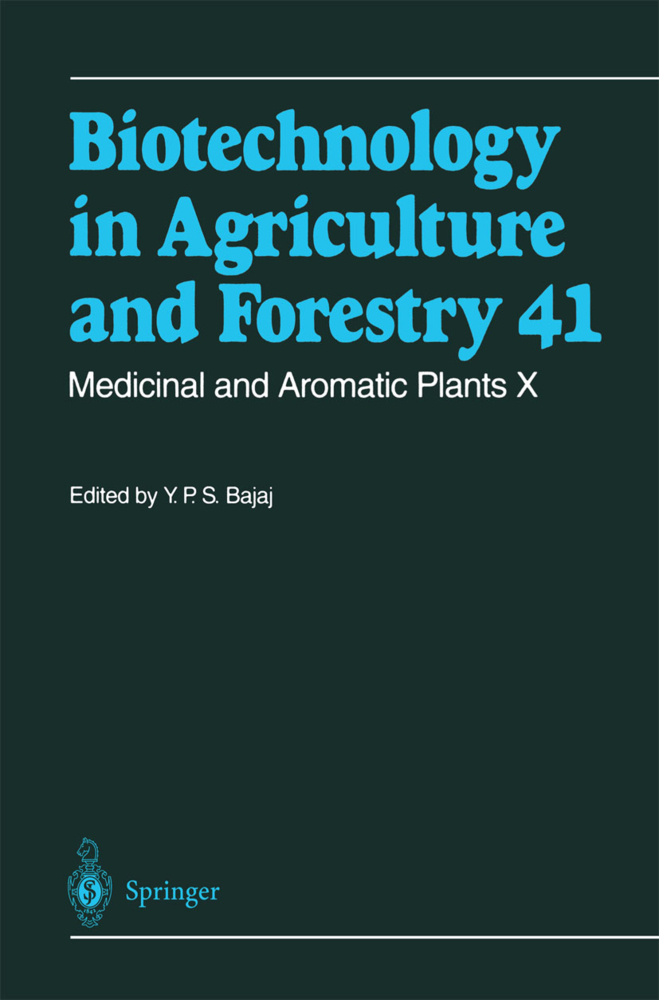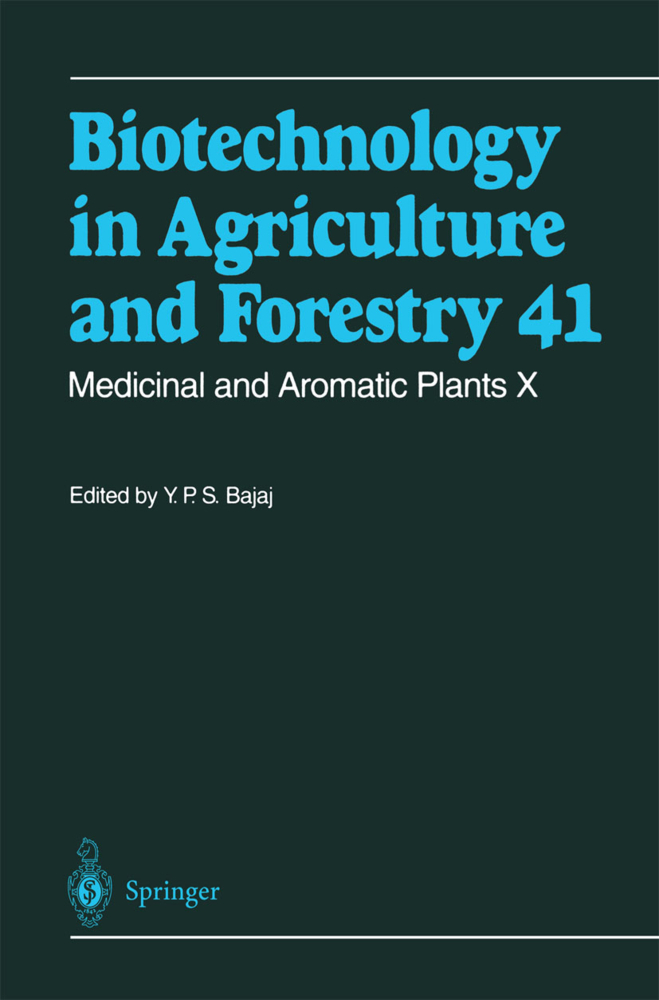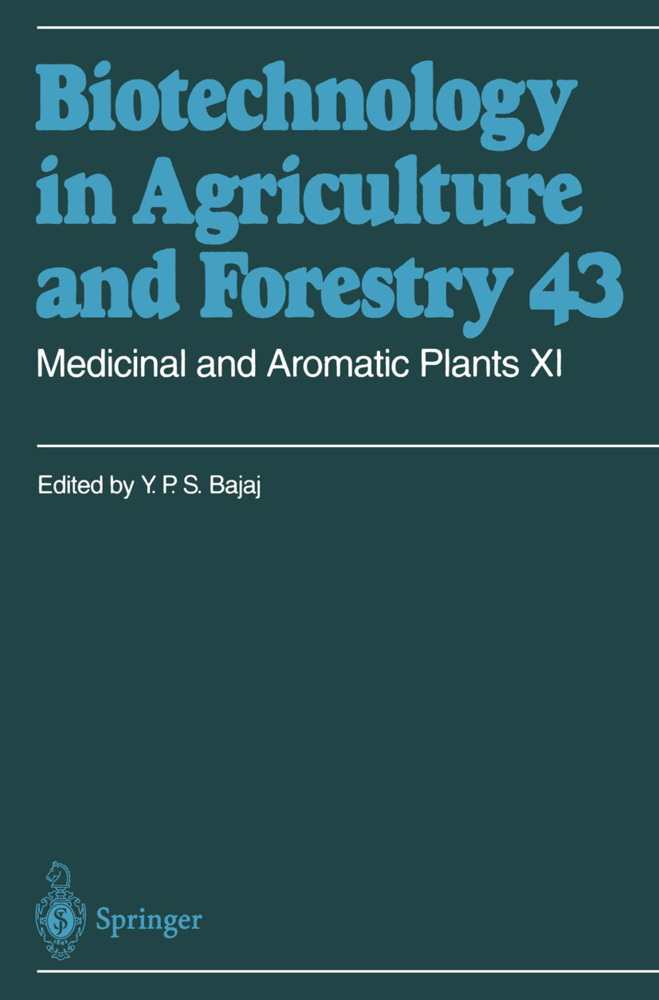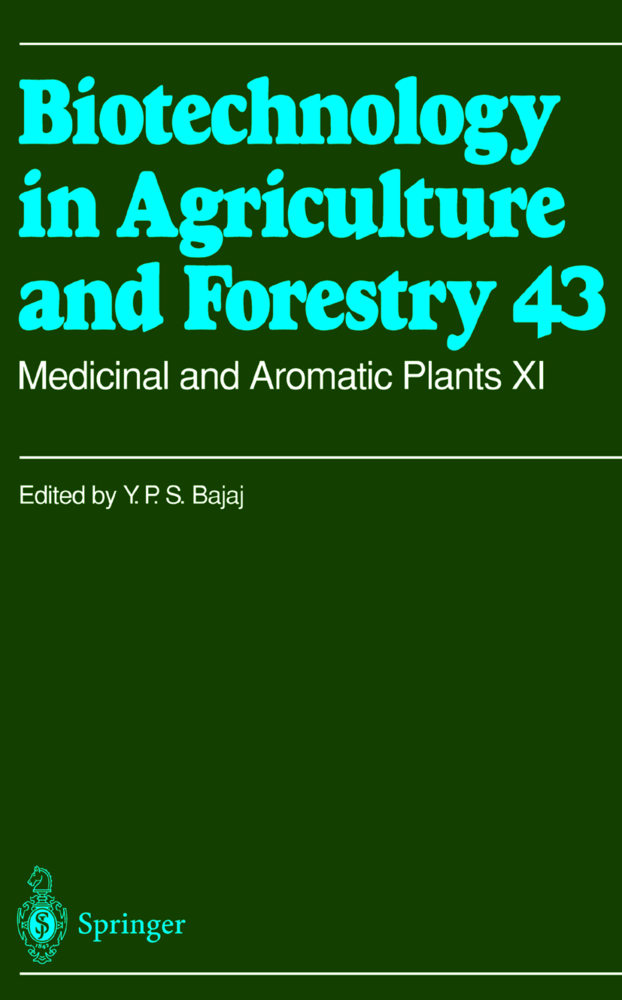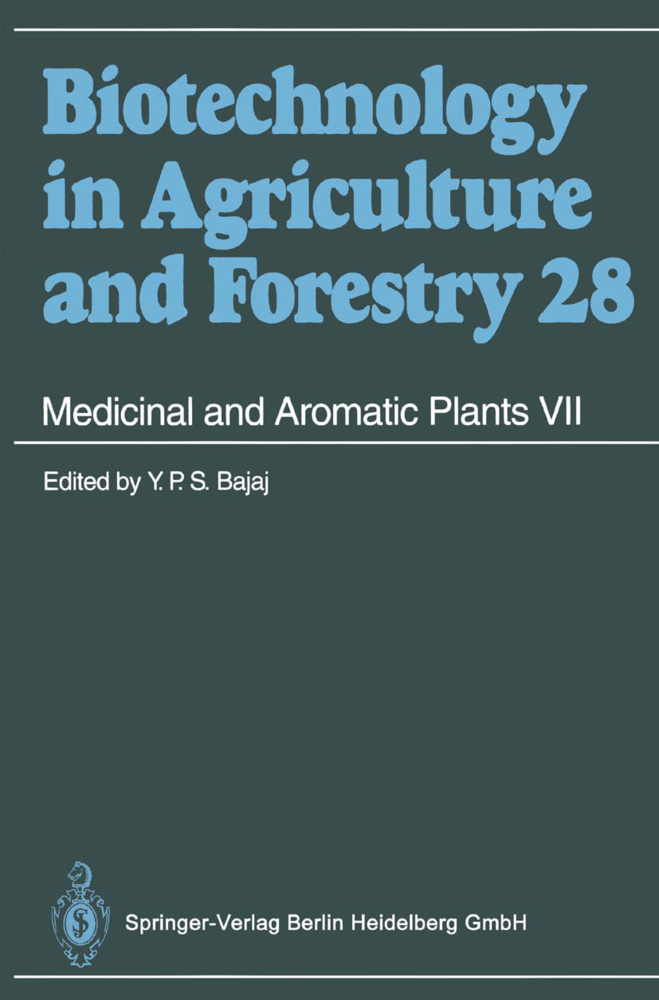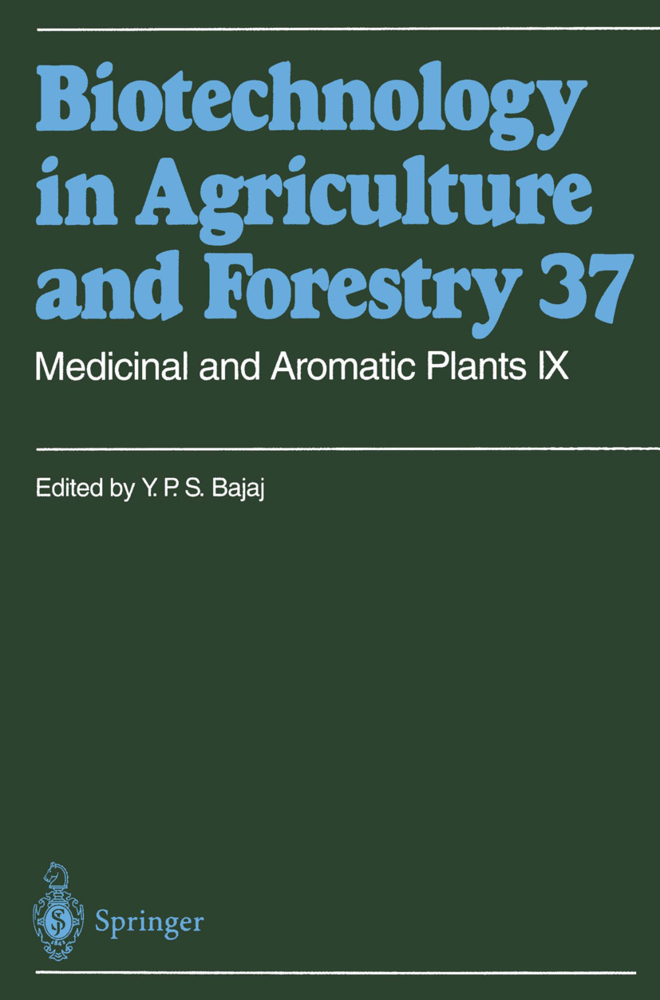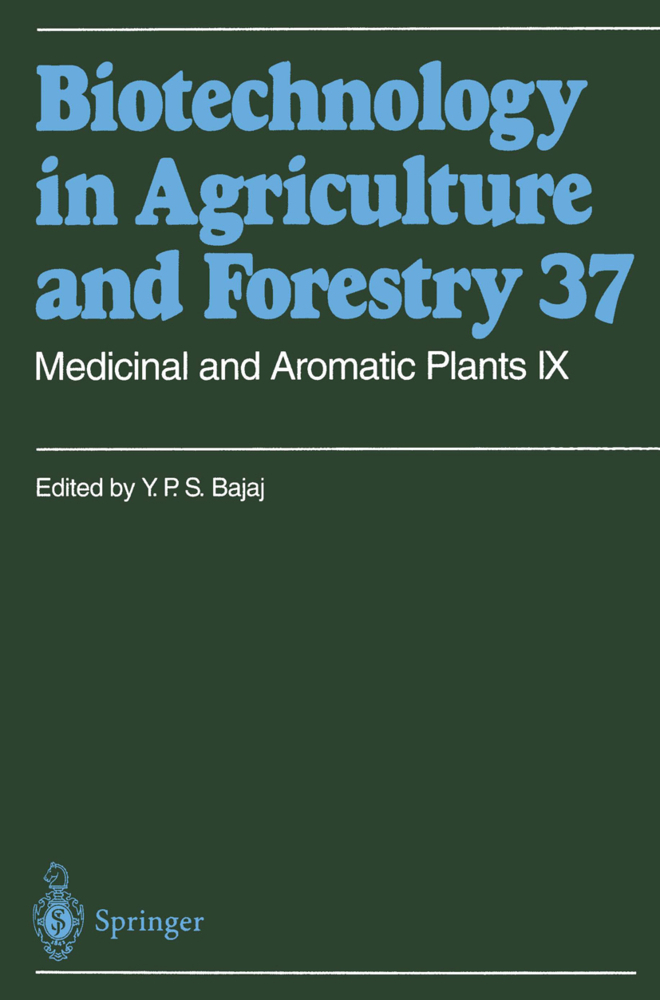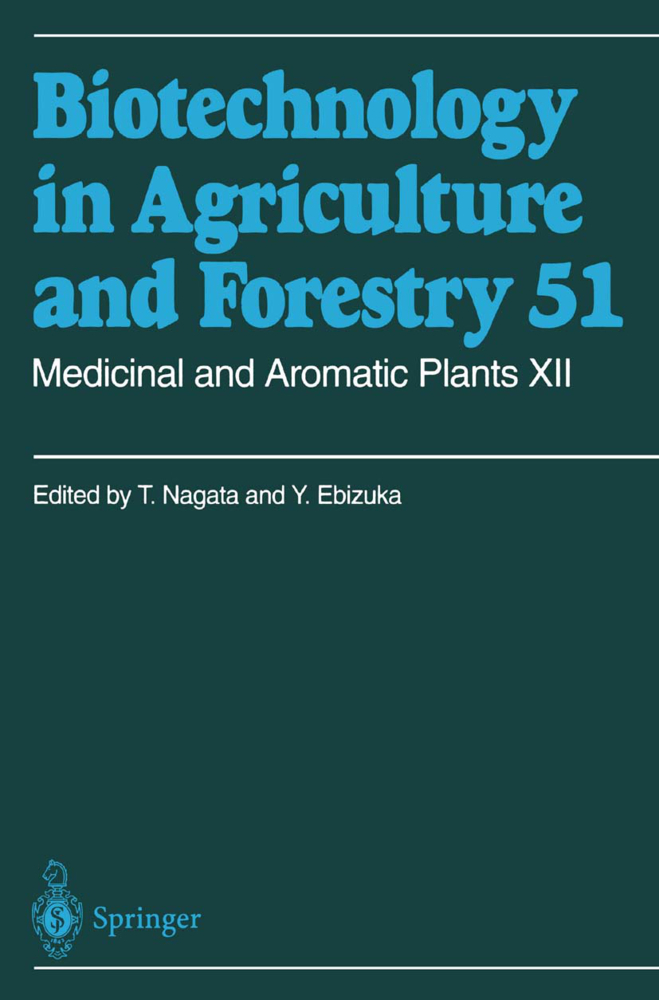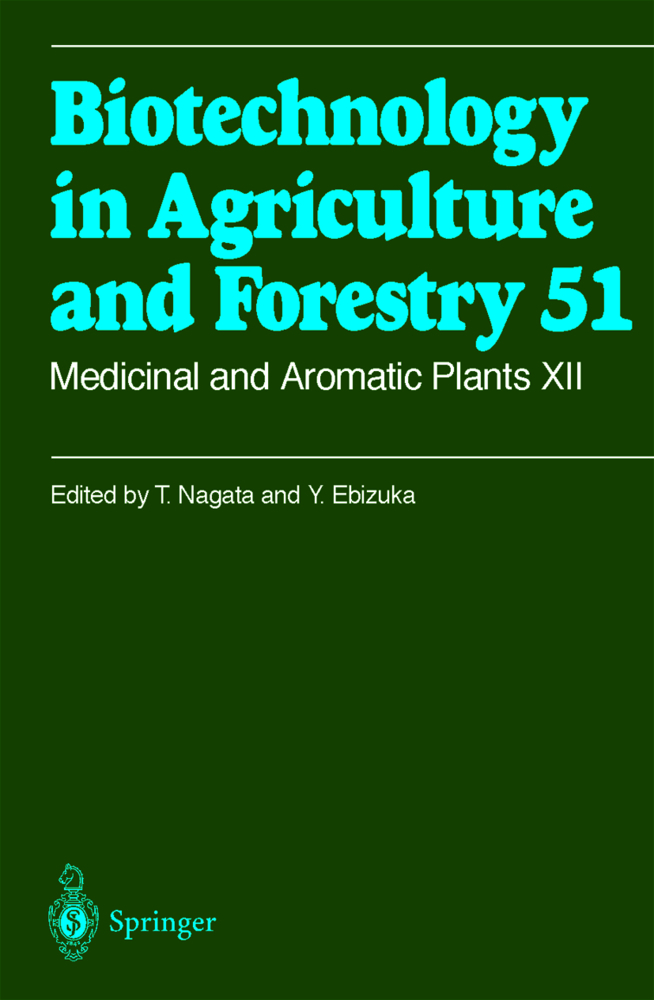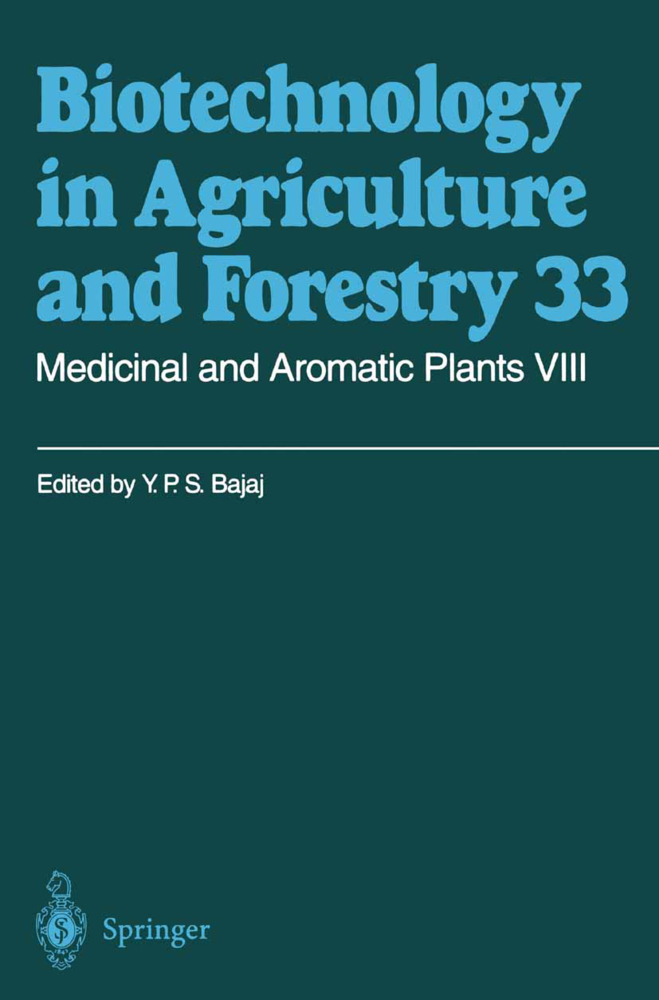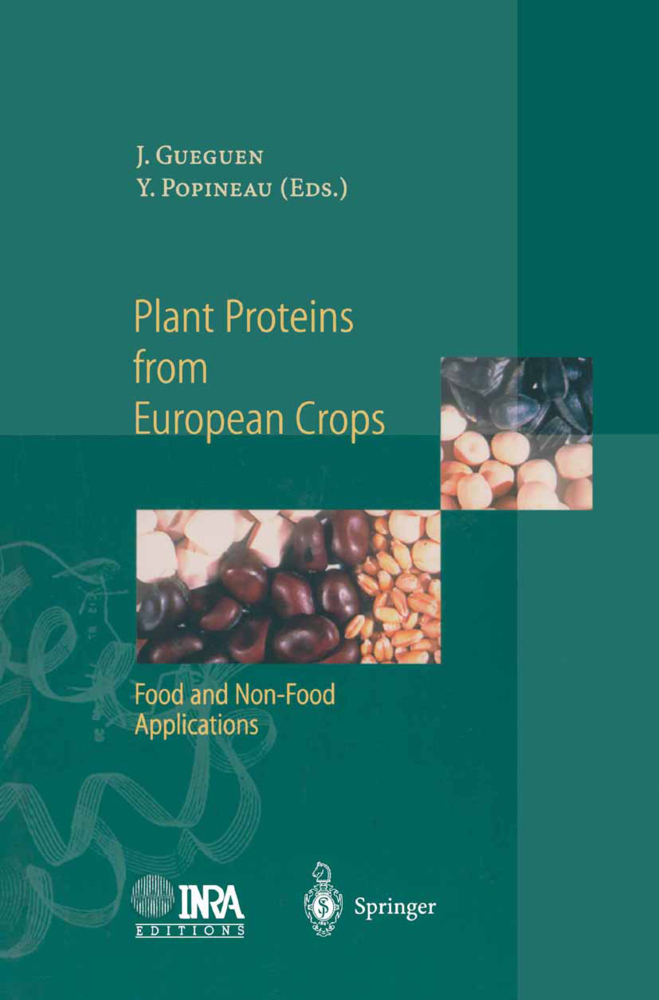Medicinal and Aromatic Plants X
Medicinal and Aromatic Plants X
Like the previous nine volumes published between 1988 and 1996, Medicinal and Aromatic Plants X is unique in its approach. It comprises 22 chapters dealing with the distribution, importance, conventional propagation, micropropagation, tissue culture studies, and the in vitro production of important medicinal and pharmaceutical compounds in various species of Actinidia, Alkanna, Arnebia, Campanula, Catharanthus, Centella, Chenopodium, Cornus, Cyanara, Ephedra, Euglena, Haplophyllum, Morus, Oenothera, Otacanthus, Oxalis, Polypodium, Rosmarinus, Sesamum, Solanum, Taxus, and Tephrosia. This book is tailored to the needs of advanced students, teachers, and research scientists in the field of pharmacy, plant tissue culture, phytochemistry, biochemical engineering, and plant biotechnology in general.
III Arnebia euchroma: In Vitro Culture and the Production of Shikonin and Other Secondary Metabolites
IV Campanula (Bellflower) Species: In Vitro Culture, Micropropagation, and the Production of Anthocyanins, Polyacetylenes, and Other Secondary Metabolites
V Catharanthus roseus (Periwinkle): In Vitro Culture, and High-Level Production of Arbutin by Biotransformation
VI Centella asiatica (L.) Urban. (Pennywort): Cell Culture, Production of Terpenoïds, and Biotransformation Capacity
VII Chenopodium album L. (Fat Hen): In Vitro Cell Culture, and Production of Secondary Metabolites (Phytosterols and Ecdysteroids)
VIII Cornus kousa (Dogwood): In Vitro Culture, and the Production of Tannins and Other Phenolic Compounds
IX Cynara cardunculus subsp. flavescens (Cardoon): In Vitro Culture, and the Production of Cyprosins - Milk Clotting Enzymes
X Ephedra Species: In Vitro Culture, Micropropagation and the Production of Ephedrine and Other Alkaloids
XI Euglena gracilis Z: Biotransformation of Terpenoids and Related Compounds
XII Haplophyllum patavinum (L.) G. Don fil. (Paduan rue): In Vitro Regeneration, and the Production of Coumarin Compounds
XIII Morus Species (Mulberry): In Vitro Culture, Micropropagation, and the Formation of Mulberrofuran, Kuwanol, and Other Secondary Metabolites
XIV Oenothera Species (Evening Primrose): In Vitro Regeneration, Production of Flavonoids, Fatty Acids, and Other Secondary Metabolites
XV Otacanthus Species: In Vitro Culture, Plant Propagation, and the Production ofEssential Oil
XVI Oxalis Species: In Vitro Culture, Micropropagation, and the Formation of Anthocyanins
XVII Polypodium vulgare L. (Wood Fern): In Vitro Cultures and the Production of Phytoecdysteroids
XVIII Rosmarinus officinalis L. (Rosemary): In Vitro Culture, Regeneration of Plants, and the Level of Essential Oil and Monoterpenoid Constituents
XIX Sesamum indicum L. (Sesame): In Vitro Culture, and the Production of Naphthoquinone and Other Secondary Metabolites
XX Solanum mammosum L. (Terong Susu): In Vitro Culture and the Production of Steroidal Alkaloids and Other Secondary Metabolites
XXI Taxus Species (Yew): In Vitro Culture, and the Production of Taxol and Other Secondary Metabolites
XXII Tephrosia vogelii Hook f.: In Vitro Culture, and the Production of Rotenoids and Other Secondary Metabolites.
I Actinidia polygama (Japanese name Matatabi): In Vitro Culture, Micropropagation, and the Production of Monoterpenes and Triterpenoids
II Alkanna tinctoria T. (Alkanets): In Vitro Culture and the Production of Alkannin and Other Secondary MetabolitesIII Arnebia euchroma: In Vitro Culture and the Production of Shikonin and Other Secondary Metabolites
IV Campanula (Bellflower) Species: In Vitro Culture, Micropropagation, and the Production of Anthocyanins, Polyacetylenes, and Other Secondary Metabolites
V Catharanthus roseus (Periwinkle): In Vitro Culture, and High-Level Production of Arbutin by Biotransformation
VI Centella asiatica (L.) Urban. (Pennywort): Cell Culture, Production of Terpenoïds, and Biotransformation Capacity
VII Chenopodium album L. (Fat Hen): In Vitro Cell Culture, and Production of Secondary Metabolites (Phytosterols and Ecdysteroids)
VIII Cornus kousa (Dogwood): In Vitro Culture, and the Production of Tannins and Other Phenolic Compounds
IX Cynara cardunculus subsp. flavescens (Cardoon): In Vitro Culture, and the Production of Cyprosins - Milk Clotting Enzymes
X Ephedra Species: In Vitro Culture, Micropropagation and the Production of Ephedrine and Other Alkaloids
XI Euglena gracilis Z: Biotransformation of Terpenoids and Related Compounds
XII Haplophyllum patavinum (L.) G. Don fil. (Paduan rue): In Vitro Regeneration, and the Production of Coumarin Compounds
XIII Morus Species (Mulberry): In Vitro Culture, Micropropagation, and the Formation of Mulberrofuran, Kuwanol, and Other Secondary Metabolites
XIV Oenothera Species (Evening Primrose): In Vitro Regeneration, Production of Flavonoids, Fatty Acids, and Other Secondary Metabolites
XV Otacanthus Species: In Vitro Culture, Plant Propagation, and the Production ofEssential Oil
XVI Oxalis Species: In Vitro Culture, Micropropagation, and the Formation of Anthocyanins
XVII Polypodium vulgare L. (Wood Fern): In Vitro Cultures and the Production of Phytoecdysteroids
XVIII Rosmarinus officinalis L. (Rosemary): In Vitro Culture, Regeneration of Plants, and the Level of Essential Oil and Monoterpenoid Constituents
XIX Sesamum indicum L. (Sesame): In Vitro Culture, and the Production of Naphthoquinone and Other Secondary Metabolites
XX Solanum mammosum L. (Terong Susu): In Vitro Culture and the Production of Steroidal Alkaloids and Other Secondary Metabolites
XXI Taxus Species (Yew): In Vitro Culture, and the Production of Taxol and Other Secondary Metabolites
XXII Tephrosia vogelii Hook f.: In Vitro Culture, and the Production of Rotenoids and Other Secondary Metabolites.
Bajaj, Yashpal P. S.
| ISBN | 9783642637483 |
|---|---|
| Artikelnummer | 9783642637483 |
| Medientyp | Buch |
| Copyrightjahr | 2012 |
| Verlag | Springer, Berlin |
| Umfang | 460 Seiten |
| Abbildungen | XX, 460 p. 226 illus., 1 illus. in color. |
| Sprache | Englisch |

